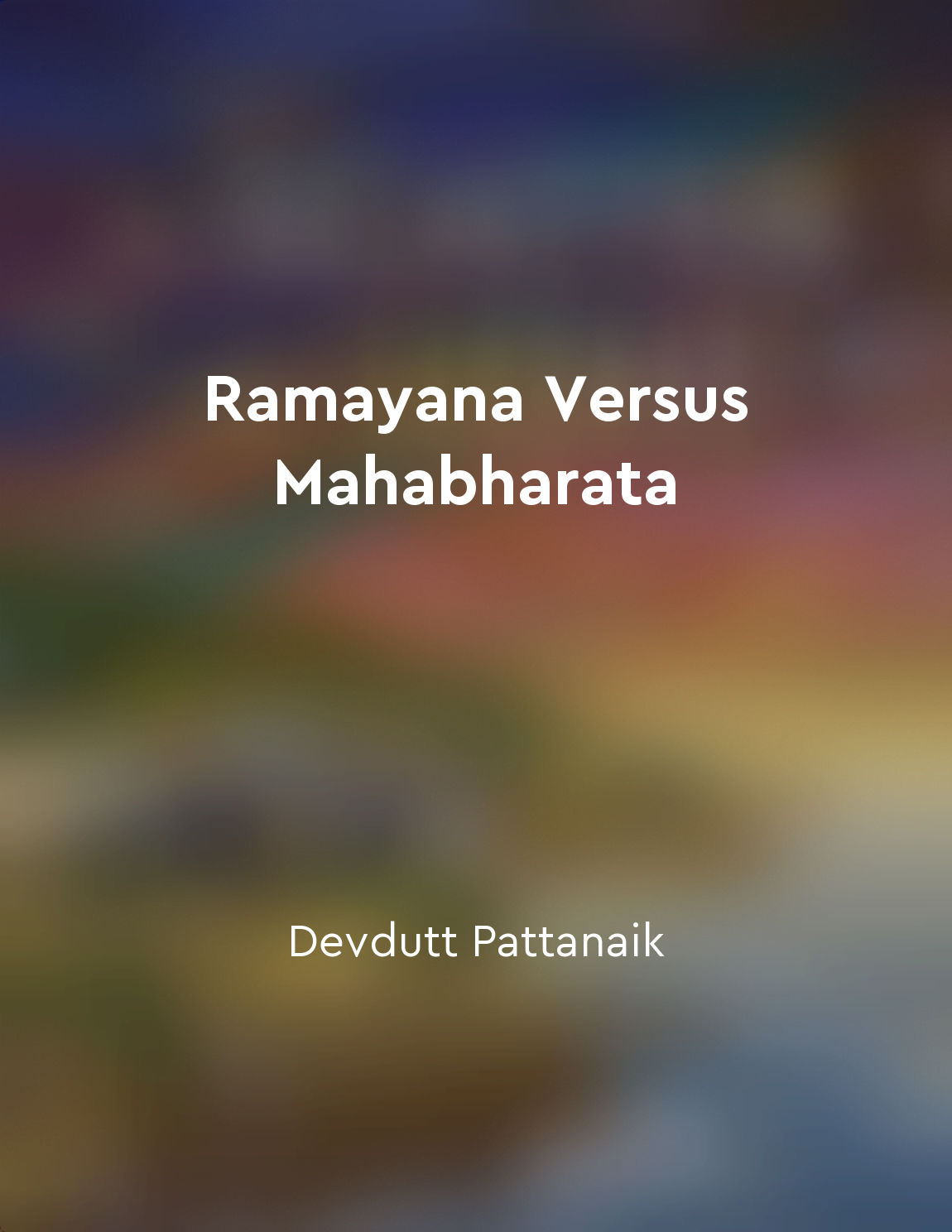Ramayana's Ram Darbar is ideal kingdom, Mahabharata's Hastinapur is flawed kingdom from "summary" of Ramayana Versus Mahabharata by Devdutt Pattanaik
In the ancient Indian epics of Ramayana and Mahabharata, two contrasting visions of ideal and flawed kingdoms are vividly portrayed. Ramayana presents Ram Darbar as an epitome of an ideal kingdom, where righteousness and dharma prevail. The kingdom of Ayodhya under the rule of King Ram is depicted as a harmonious and prosperous realm, where justice is served and people live in peace. On the other hand, Mahabharata showcases Hastinapur as a flawed kingdom, marred by power struggles, greed, and moral dilemmas. The kingdom ruled by the Kuru dynasty is plagued by internal conflicts, deceit, and betrayal, leading to a catastrophic war that tears the kingdom apart. The flawed nature of Hastinapur is evident in the complex relationships between the characters, the manipulation of power, and the moral ambiguity that pervades the narrative. Ram Darbar in Ramayana is characterized by the presence of a virtuous and noble king like Ram, who upholds dharma and righteousness at all costs. His actions are guided by moral principles, and he is revered as a just and compassionate ruler by his subjects. The kingdom of Ayodhya is depicted as an idyllic paradise, where the welfare of the people is paramount, and the king leads by example. In contrast, the kingdom of Hastinapur in Mahabharata is portrayed as a realm where power dynamics and personal ambitions take precedence over moral values. The flawed nature of Hastinapur is reflected in the actions of its rulers, who are driven by selfish motives and engage in deceitful practices to achieve their goals. The lack of unity and integrity among the members of the Kuru dynasty ultimately leads to their downfall and the destruction of the kingdom.- The contrasting portrayal of Ram Darbar in Ramayana and Hastinapur in Mahabharata serves to highlight the timeless themes of virtue and vice, righteousness and corruption, that have been central to Indian mythology for centuries. Through these narratives, readers are invited to reflect on the qualities of ideal and flawed kingdoms and the impact of leadership and moral values on the destiny of civilizations.


